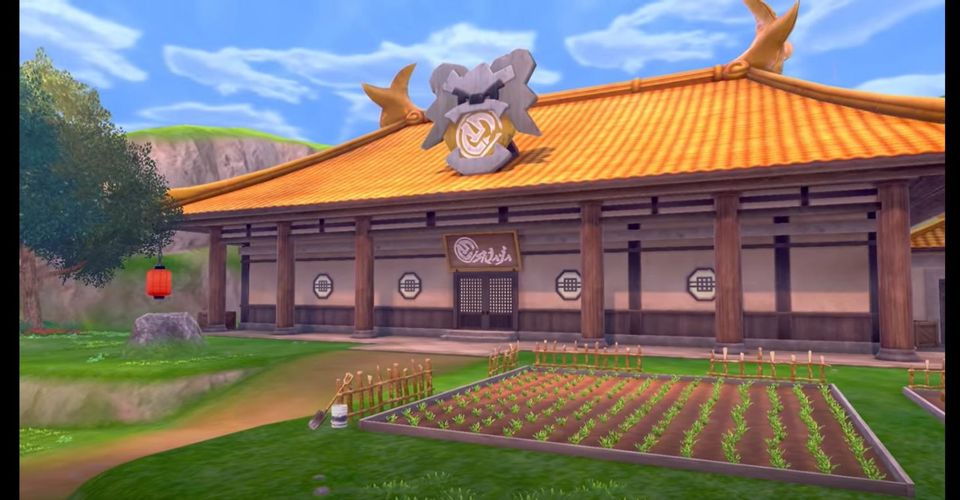Pokemon Sword & Shield: Best Tutor Moves in Isle of Armor (& How to Learn Them)

Pokémon Sword and Shield‘s new Isle of Armor expansion brings a plethora of new features for players to explore on the titular island. One of which is a brand new Move Tutor. Move Tutors, that teach new moves to Pokémon are nothing new to the series and have been present in most installments. What makes this Move Tutor special, is that they can teach the player’s team completely new moves that are exclusive to the Isle of Armor expansion.
There’s one new move for every type, and they all have unique properties players might find useful. This guide will explain how to access the new Move Tutor, as well as what moves are the best for players to teach their team.
How to find Sword and Shield’s New Move Tutor

Players can access the Move Tutor once they complete the first trial in Isle of Armor’s story. He looks like the regular male dojo participants and he’s located in the main dojo in the back on the right. In order to teach these new moves, the player must give him 5 Armorite. This material is unique to the Isle of Armor, and can be obtained through several methods. Players can win Armorite as a reward for winning max-raid battles on the island, from miners scattered about the island in random locations, or find them lying about on the ground. Armorite can be found simply by exploring the Isle of Armor alongside one’s Pokémon. Once they have enough, they’ll be able to exchange them for a new move!
Isle of Armor’s New Moves

Several of the new moves that can be taught on the Isle of Armor are meant to take advantage of Terrains. Introduced a few generations back in the series, Terrains are battlefield alterations that provide varying bonuses. For instance, Grassy Terrain increases the power of Grass-type moves and restores the health of all grounded Pokémon at the end of the turn. One of the new moves, Grassy Glide, is a Grass-type move that gains priority if Grassy Terrain is active. Priority moves let Pokémon get a guaranteed strike on a target by moving first, useful with slower Pokémon who usually attack last. What makes Grassy Glide stand out is that it has base 70 power, while most other priority moves, like Quick Attack, deal much less damage in exchange for priority. Another of these new terrain moves players should look out for is Rising Voltage. It normally has base 70 power but will double to 140 if Electric Terrain is active. Most high damage moves have a drawback, like lowering stats or low accuracy, so dealing large outputs of damage in addition to Electric Terrain’s buff to electric moves can put serious holes in an opponent’s team.
Some of Isle of Armor’s new moves require specific conditions to be met for them to be active. Burning Jealousy is a fantastic Fire move for the start of a match. It deals damage, but will always inflict targets with burn if they’ve risen one of their stats that same turn. Burn is a status condition that halves physical attack, which will debilitate Pokémon that rely on their Attack stats. Players tend to set up stat-boosting moves, like Shell Smash, when their Pokémon is first sent out, so Burning Jealousy can be used as a means to check that. Because it requires a foe to raise their stats first, slower Pokémon, like Torkoal, will make the most out of this move because they act later. Another more situational move is Poltergeist, which has 110 base power but will only work if the target has a held item. This attack will work more often in online matches than during the main story because NPCs don’t use items as much as competitive players do. That said, the requirement for this move is very easy to satisfy, so try teaching this to Ghost-types in need of a powerful new move.
One of the most useful moves in the series is Scald, a Water-type move that has a chance to burn. Isle of Armor introduces a similar Ground-type variant to this move called Scorching Sands. Aside from having 10 less base power than Scald, which has 80, Scorching Sands is a solid alternative for Pokémon that cannot normally learn Scald or inflict Burn on targets. Palossand, the haunted sandcastle, benefits greatly from learning this move, as burnt targets will have a harder time penetrating its high defenses. In a similar vein, Flip Turn puts a Water-type spin on the Volt Switch move. This attack damages the target, then switches out the Pokemon that used it. Switching out manually spends a turn to do, but Flip Turn and its variants deal damage first and then let the player bring out a new Pokemon that’s more advantageous. Lastly, Skitter Smack is a bug type attack that will always lower the target’s Special Attack when it hits. Lots of Pokemon, not just Bug types, can learn this move, so it can provide more type coverage as well. Try it on bulkier Pokemon, like Milotic and Dusknoir, so that they can tank Special Attacks more. Of course, Pokemon deal more damage if the move they’re using matches their type, so Bug types like Golisopod will hit harder with Skitter Smack.
Pokémon Sword and Shield is available for the Nintendo Switch
About The Author

















